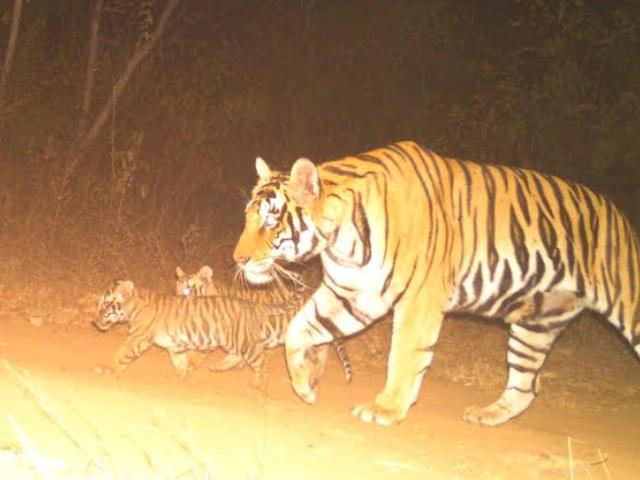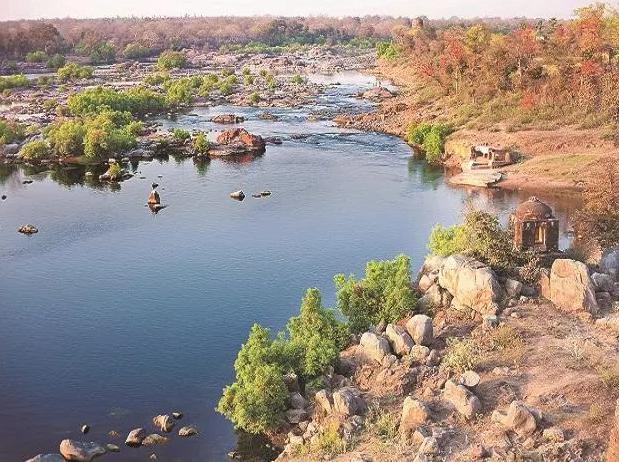Villagers shot videos and took pictures with their mobile phones as a coalition of cheetahs attempted to kill a calf on the outskirts of a village located at the edge of Kuno National Park . As the cheetahs pounced on the calf, the villagers yelled and pelted stones at the cheetahs as they ran into the forest. Although the cheetah trackers tried to stop the villagers, they were outnumbered. This incident has raised serious questions, especially at a time when the project is considered to be on the right track after the release of 17 cheetahs into the wild. Critics have once again asked: Are the animals safe? Will Kuno's villages face more cases of human-animal conflict? And the biggest question: Can Kuno support 17 cheetahs and provide enough prey to sustain them? Let's analyze this with the help of Grok , a generative artificial intelligence chatbot developed by xAI. Stones Hurled At Cheetahs But first, the real-life drama on the dusty tracks of Sheopur, where Kuno is locate...
As the threat of Ken Betwa Linking Project (KBLP) continues to stare Panna tiger reserve (PTR) , its tiger numbers are “going up exponentially” and may touch “100 sooner than predicted”. Not only this, the big cat is covering those parts of the park as well where they were not seen earlier. Though almost all the green permissions for the KBLP are yet to be cleared, the government in Madhya Pradesh has started survey of the villagers to be affected by the proposed project, propagated as a game changer for Bundelkhand region by transferring “surplus water” from Ken River to Betwa to irrigate the drought prone region. Experts have contested the merits of the project and questioned the environmental feasibility.
Panna's Success Story In This Report
An interesting tiger study released by the field director of the PTR, Uttam Kumar Sharma, talks about various aspects of the rise in the population of the big cats in Panna, the geographical regions where the tiger numbers are increasing, the dispersal pattern of the tigers in Panna Landscape and the impact of a highway 39 criss crossing the core area of the park deterring tigers to cross the road. “Tigers are continuously moving across the boundary of PTR in to the Panna Landscape. There is not only outward movement, it has been observed that tigers which were earlier considered disperse in to landscape have returned back to the PTR”, the study said. Besides the dispersal, the tigers are exploring new areas within PTR boundaries, which were earlier having “no presence of tiger.” The report gives example of five tigresses P222, P641, P642, P643 and P433-22 seen for the first time.”
They have given birth and rearing cubs in the forest ranges of PTR West of Ken river, in Chhatarpur district”, the report said. Recently, tigress P141-12 with her cubs was also seen in areas west of Ken river in the core area of Chandranagar range. Her movement was earlier reported in areas East of Ken river in the Core area of Madla Range. “Presently, at least 8 adult tigers along with 10 cubs are present in Forest Ranges, West of Ken River within the boundary of PTR”. This number will grow further as lots of habitat improvement work has been done in these areas assessing their potential in becoming good tiger habitats, the report said. But there is bad news attached to this piece of information. The tiger numbers may be going up, they may not last longer as the most of the submergence from KBLP would happen in this area only. The PTR study predicts population of tigers in Panna to be somewhere 84 to 86 by the end of 2022. The number was zero in 2009 before the tiger reintroduction programme was started.The next blog will carry the full report of Panna tiger reserve.
River Project To Submerge Critical Tiger Habitat
When the tiger reserve is rejoicing the rising numbers of the big cat, the KBLP is all set to reverse the tiger triumph and destroy the most successful tiger reintroduction programme launched in any tiger reserve. The project will lead to submergence of critical tiger habitat (CTH) Panna Tiger Reserve triggering a major loss of the tiger and its major prey species such as chital and sambar, says a a new study Current Science. “The project may incur an estimated loss of 58.03 square kilometres (10.07 per cent) of critical tiger habitat (CTH) in the reserve”, the report said. There will be an indirect loss of 105.23 sq km of the CTH because of habitat fragmentation and loss of connectivity due to submergence, the study published on December 25, 2021, claimed . Apart from successful tiger translocation, PTR is rich in prey species such as sambar, spotted deer neelgai , chinkara and chausingha among others protected under the Wildlife Protection Act, 1972 and are also listed in Convention on International Trade in Endangered Species(CITES). The National Tiger Conservation Authority or the NTCA and Central Empowered Committee appointed by the Supreme Court of India have already expressed concerns about the loss of 105 sq. km of the tiger habitat because of submergence and habitat fragmentation.
As the construction of large dams for the interlinking of rivers to solve the irrigation and drinking water problems created potential threats to the apex predator, herbivores and the overall biodiversity Panna, the Current Science study titled “The inter-linking of rivers and biodiversity conservation: a study of Panna Tiger Reserve, Madhya Pradesh, India” said there are examples within Bundelkhand, on ways to manage the water crisis. This region is spread across the two states of Uttar Pradesh (UP ) and Madhya Pradesh (MP) where the PTR is located, The total area submerged would be 86.50 sq km, of which 57.21 sq km lies within Panna Tiger Reserve, the study said. This will account for 65.50 per cent of total submergence. The land use land cover and vegetation data shows that tree density and diversity are comparatively higher in the submerged area.The Union Cabinet December 8, 2021, approved the funding and implementation of the Ken-Betwa inter-linking of rivers project at a cost of Rs 44,605 crore.
Though many statutory permissions are required to be obtained, the government in Madhya Pradesh has started the survey of the proposed submergence areas and notices are served to villagers. Union Information and Broadcasting minister Anurag Thakur had said the river linking project was deemed a ‘national project’ and the Centre will take care of 90 % of the project’s cost.The remaining 10 per cent cost will be shared by UP and MP. The project spreads across the districts of two states — Jhansi, Banda, Lalitpur and Mahoba districts of UP and Tikamgarh, Panna and Chhatarpur districts of MP — through a 230-km-long canal.
Banner Pic: Panna Tiger Reserve




Comments
Post a Comment